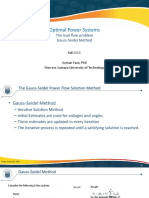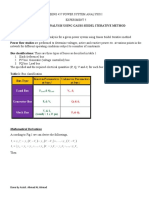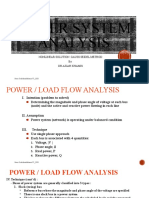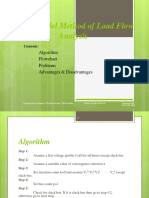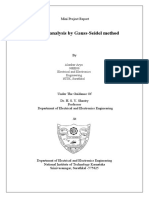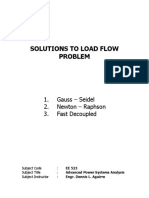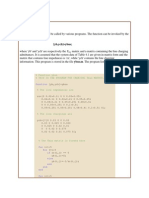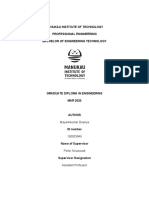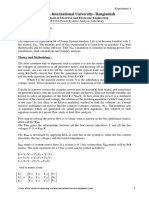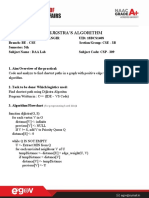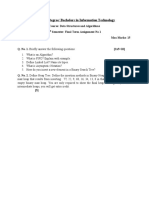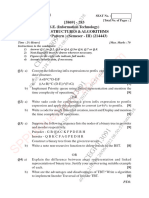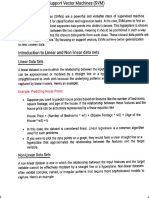0% found this document useful (0 votes)
129 views9 pagesLoad Flow Gauss-Seidel Method EE 452: Computer Methods in Power Systems
1) The document describes the Gauss-Seidel load flow method to solve a 3-bus power system model. Key steps include forming the bus admittance matrix, initializing voltages, and iteratively calculating voltage updates for PQ and PV buses until voltages converge.
2) Voltage magnitudes and angles are updated using the power injection equations for each bus type. Convergence is checked when voltage changes are less than 0.001 per unit between iterations.
3) After 7 iterations, the voltages at Buses 2 and 3 converge to 0.9721∠2.69° and 1.04∠-0.497° respectively, indicating the load flow solution has been found using the Gauss-
Uploaded by
JerryCopyright
© © All Rights Reserved
We take content rights seriously. If you suspect this is your content, claim it here.
Available Formats
Download as PDF, TXT or read online on Scribd
0% found this document useful (0 votes)
129 views9 pagesLoad Flow Gauss-Seidel Method EE 452: Computer Methods in Power Systems
1) The document describes the Gauss-Seidel load flow method to solve a 3-bus power system model. Key steps include forming the bus admittance matrix, initializing voltages, and iteratively calculating voltage updates for PQ and PV buses until voltages converge.
2) Voltage magnitudes and angles are updated using the power injection equations for each bus type. Convergence is checked when voltage changes are less than 0.001 per unit between iterations.
3) After 7 iterations, the voltages at Buses 2 and 3 converge to 0.9721∠2.69° and 1.04∠-0.497° respectively, indicating the load flow solution has been found using the Gauss-
Uploaded by
JerryCopyright
© © All Rights Reserved
We take content rights seriously. If you suspect this is your content, claim it here.
Available Formats
Download as PDF, TXT or read online on Scribd
/ 9



